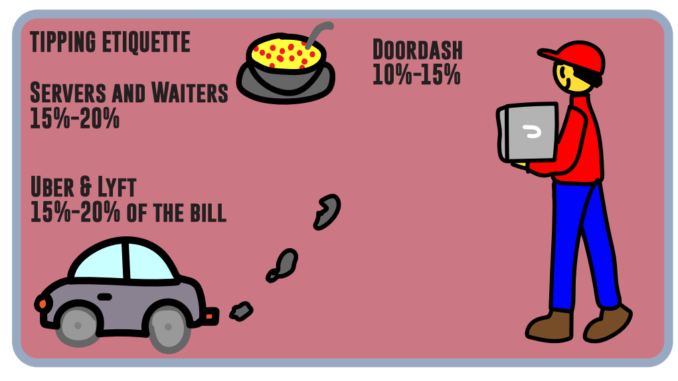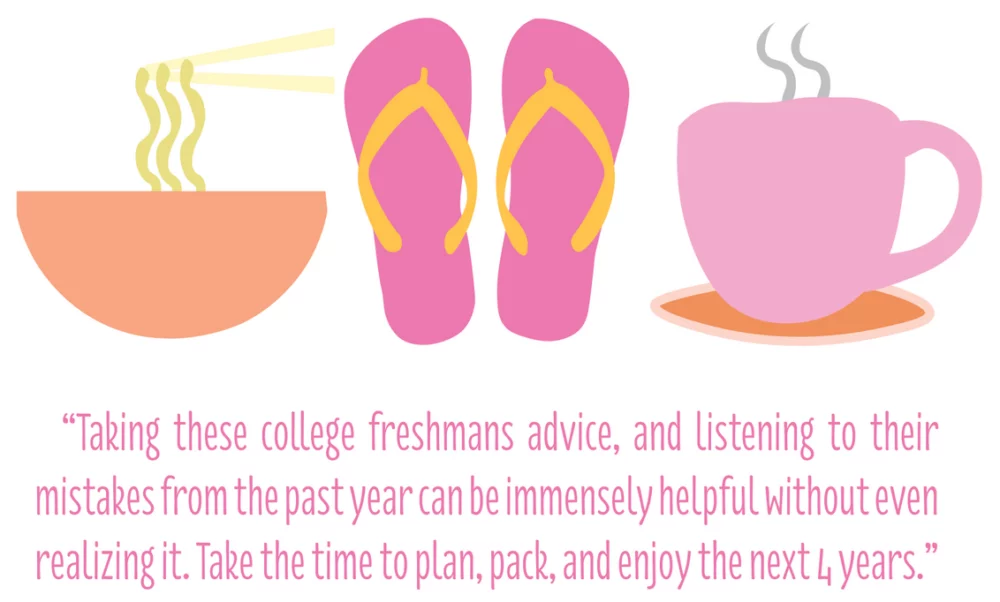
design: Nathan Chow
source: Reader’s Digest
When people walk into a restaurant, they only expect to have to tip if they’re sitting down, getting their food served to them. This has been the norm for years, but as of recently, a tipping related outrage has begun.
After the COVID-19 pandemic, many are angered at how often they are pressured to tip at places they had never tipped before. This could be caused by the new use of touchscreens at the register.
“I usually watch people use the touchscreen because a lot of times people don’t know how to properly pay with the screen and I want to see if they give tips or not,” Crumbl employee and sophomore Grace Bozic said.
These gadgets have added a new pressure to tip since the worker in front of the customer can watch exactly what they do. Nobody wants to be that person who doesn’t tip, especially right in front of the employee.
“Many quick service restaurants (McDonalds etc.) have switched to including a tipping screen when checking out with debit or credit card. For this reason, I do feel pressured as the screen is there asking me to tip,” Pioneer Cafe manager Christine Swenson said.
Before the pandemic, people wouldn’t even think about tipping employees that have a normal hourly wage. Some occupations, like restaurant servers and others that rely on tips, still make a minimum wage of $4.65.
“At the moment, I can’t think of a situation where I would tip someone in food service that has a living wage. For example, staff at McDonalds all earn the non-tipping employee state/federal hourly wage,” Swenson said.
According to New York Times, tipping rates have been wildly increasing and decreasing since the pandemic. Some restaurant owners even say their tips have increased by almost 50 percent.
“I think that is low [minimum tipping wage]. While it is half of Ohio’s minimum wage of $9.30, many restaurants pay more to attract more employees,” Swenson said, “The tipped employees should be paid more too and not rely on customers tipping the difference.”
Normally, when people tip servers and bartenders, the tips go straight to the employee. However now in recent times, they are either split or sent to the restaurant.
“My business sources have confirmed this is done to help offset the cost of processing noncash transactions. These ‘tips’ don’t actually reach the employees but more of a slush fund for the restaurant,” Swenson said. “Banks have raised fees to process cards.”
According to bankrates, most processing fees for credit cards range from 1.5 percent to 3.5 percent of the transaction. There are also fees for having a bank account account, called annual fees or membership fees.
“Since we are a corporate company, our tips don’t go to individuals. We split it evenly between every single worker who’s on shift.” Crumbl employee sophomore Dua Rahim said. “I get about $2-3 extra in tips an hour, plus a $10 hourly wage.”
The big question is, do these employees already earning above minimum wage really deserve tips for what they do? Many times, servers are working harder than quick service employees.
“I don’t know about other places like Mcdonald’s or Wendy’s because they have premade food that they give you over the counter, but at Crumbl we make our own dough and handmake every ingredient as well as cook We think we deserve some type of tip just because we’re doing a lot of work.” Rahim said.


